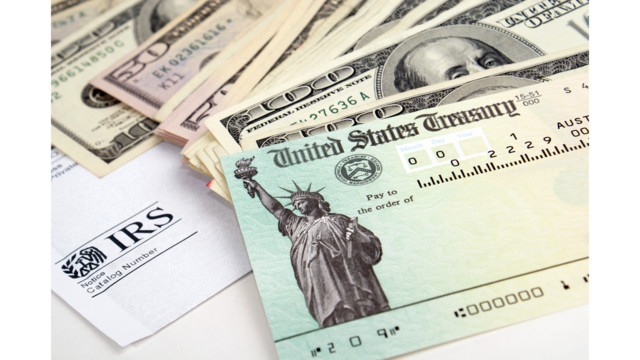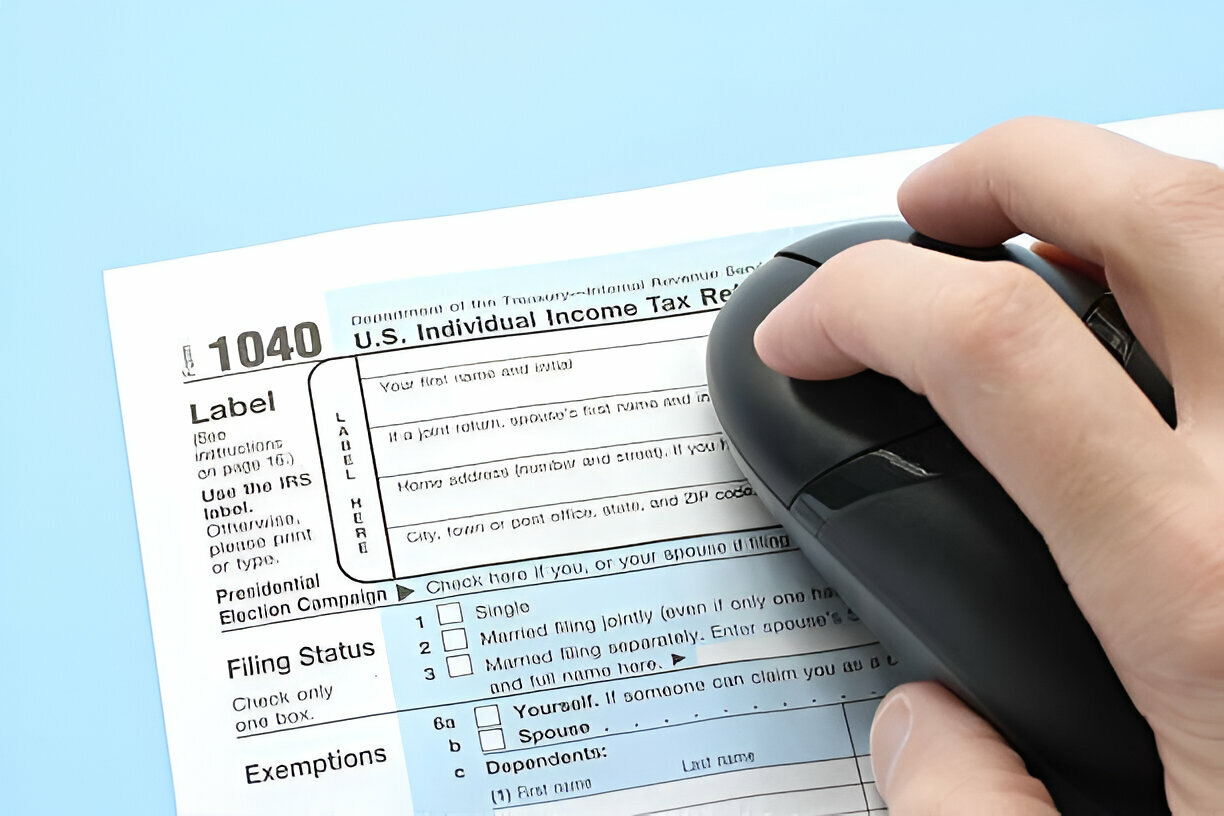(View the most recent version of this article: https://cpapracticeadvisor.com/2024/02/01/2024-tax-refund-date-estimator/100869/)
December is here, which means the 2024 tax filing season is coming soon. The IRS usually starts accepting e-filed income tax returns in the last week of January each year, with the deadline being April 15 (which can vary based on weekends or state holidays).
If you’re wondering how long it may take to get your refund when you do file, you’re not the only one looking for the answer. In fact, for more than 10 years, the top question we receive has been: “When will I get my tax refund?” The answer is never exact, but we can give you a pretty good estimate based on a few factors.
[The estimated refund date chart is below if you just want to scroll down.]
If you’ve had major income changes this year, had a child, got married or divorced, retired, bought a house, or changed investments, or made any other really significant life changes, you should definitely seek the advice of a tax professional like a CPA or EA in order to make sure you are complying with tax laws and also taking advantage of new changes that could benefit you.
One bit of great news is that the IRS has been been implementing technologies and that it says will help with processing tax returns faster than in the last few years, when it was still struggling to overcome issues related to the pandemic and backlogs of returns.
Keep in mind that the tax deadline will be back to the normal April 15, 2024 (except for residents of Maine and Massachusetts, due to state holidays on April 15, their deadline is April 17), and the weeks leading up to the deadline are when the IRS can get swamped by the highest number of tax returns. If you can’t file your taxes by April 15, keep reading below about how you can file an automatic extension, which gives you an additional six months to file.
[The estimated refund date chart is below if you just want to scroll down.]
Depending on when taxpayers file their returns, they can often receive their federal tax refund payment (check or direct deposit) within only 2-3 weeks.
The IRS Usually Starts Accepting Returns in Late January
In most recent years, the IRS has started accepting tax returns in late January. However, major or last-minute changes by Congress to the tax law can cause a delay in the start of the tax filing season. But in most cases, early tax filers who are a due a refund can often see the refund as early as mid- or late February if they have it direct deposited. That’s without an expensive “tax refund loan” or other similar product.
The IRS says most e-filed tax refunds are direct deposited into taxpayer bank accounts in as little as 10 days.
However, note that taxpayers with the Earned Income Tax Credit, Child Tax Credit, and a few other credits generally have their refunds delayed by about one month while the IRS confirms eligibility for these credits.
If your IRS income tax refund is delayed after you’ve filed, ask your tax professional, or simply use the “Where’s My Refund?” tool on the IRS website to check the status of your refund. Or you can download the IRS2Go app to check your refund status. It’s a good idea to e-file your tax return as soon as you have all of your tax documents (like your W2, 1099s, mortgage and student loan interest, and other items) as e-filing generally ensures a faster turnaround time.
Several factors can determine when a taxpayer might receive his or her tax refund, including:
- How early the return is filed;
- If the taxpayer is claiming certain credits (especially EITC and CTC);
- Whether the return is e-filed or sent by mail;
- Whether the taxpayer has existing debts to the federal government.
So, here’s the chart you were looking for. If the IRS announces any changes this spring, we will update this chart. And remember: This is an estimate of when to expect your refund. It is not exact, as all taxpayers have different tax returns, documents, incomes, and other situations. Note that the first column is when the IRS “accepts” your return, which can be 2-3 days after when you submitted it electronically. Mailing in a paper return can result in a few weeks’ extra delay at the beginning of the process, since the IRS will need to enter it into their computer systems manually.
Estimated 2024 IRS Income Tax Return Chart
| If the IRS Accepts an E-Filed Return By: | Then Direct Deposit refund may be sent as early as 10 days after e-file received. (Paper check mailed sent apx. 1 week after that): |
|---|---|
| * IRS may start accepting returns on Jan. 22, 2024. | |
| * Jan 22, 2024 | Feb. 2 (Feb. 9)** |
| *Jan. 29, 2024 | Feb. 9 (Feb. 16)** |
| Feb. 5 | Feb. 16 (Feb. 23)** |
| Feb. 12 | Feb. 23 (Mar. 1)** |
| Feb. 19 | Mar. 1 (Mar. 8)** |
| Feb. 26 | Mar. 8 (Mar 15) |
| Mar. 4 | Mar. 15 (Mar. 22) |
| Mar. 11 | Mar. 22 (Apr. 29) |
| Mar. 18 | Mar. 29 (April 5) |
| Mar. 25 | Apr. 5 (Apr. 12)*** |
* = Estimated date the IRS may start accepting e-filed tax returns.
** = Returns with EITC or CTC may have refunds delayed until March to verify credits.
*** = Filing during peak season (late March through April 15) can result in slightly longer waits.
| IRS Accepts Return By: | Direct Deposit Sent (Or Paper Check Mailed one week later) |
|---|---|
| Apr. 1, 2023 | Apr. 12 (Apr. 19)*** |
| Apr. 8 | Apr. 19 (Apr. 26)*** |
| Apr. 15 | Apr. 26 (May 3) |
| Apr. 22 | May 3 (May 10) |
| Apr. 29 | May 10 (May 17) |
| May 6 | May 17 (May 24) |
| May 13 | May 24 (May 31) |
| May 20 | May 31 (June 7) |
IMPORTANT: If you file electronically (using an online tax program or preparer), the IRS will notify you of the actual date on which the agency “accepted” your return. This is often 1-3 days from the time you actually hit the “file” or “submit” button, and it is this date that you need to use on the left side of the above chart.
Taxpayers who mail a paper version of their income tax return can expect at least a 3-4 week delay at the front-end of the process, as the return has to be entered into the IRS system before it can be processed.
Be Safe – Hire a Professional
Taxpayers who use a professional, such as a CPA or EA, can ask that professional for the estimated date of their tax refund, and they can be more confident that their taxes have been properly (and legally) filed.
There are also apps for Apple, Android and other devices that help track refund status.
Other Notes:
In general, the IRS says that returns with refunds are processed and payments issued within 21 days, and often in as little as 10 days. For paper filers, this can take much longer. The IRS and tax professionals strongly encourage electronic filing.
What If You Can’t File Your Income Taxes By April 15?
Taxpayers who don’t have all of the paperwork needed in order to file their taxes can easily file an extension form, “Form 4868, Application for Automatic Extension of Time to File U.S. Individual Income Tax Return.” (Link to IRS Form 4868.) – This will give the taxpayer until October 15, 2024 to file the federal tax return. No reason or excuse is needed to receive this extension, and as the title states, it is automatically granted. Be sure to check the extension rules for your particular state as the extension date may differ from the date for the federal return extension.
Note that if a person will owe taxes with the tax return, it is still that taxpayer’s obligation to pay those taxes by April 15, 2024, even if an extension to file has been requested. A tax professional can assist with this payment process. Those who are due a refund generally only need to file the extension request by April 15, 2024. Any tax professional and most do-it-yourself tax programs can perform this task.
Tax Refund Estimators:
- https://turbotax.intuit.com/tax-tools/calculators/taxcaster/
- https://www.taxact.com/tools/tax-calculator
Thanks for reading CPA Practice Advisor!
Subscribe Already registered? Log In
Need more information? Read the FAQs




